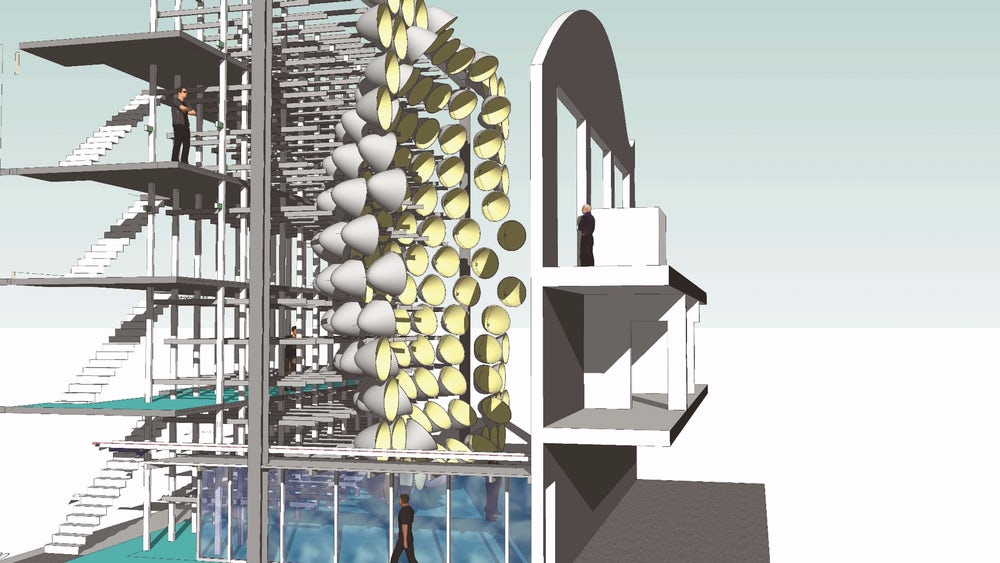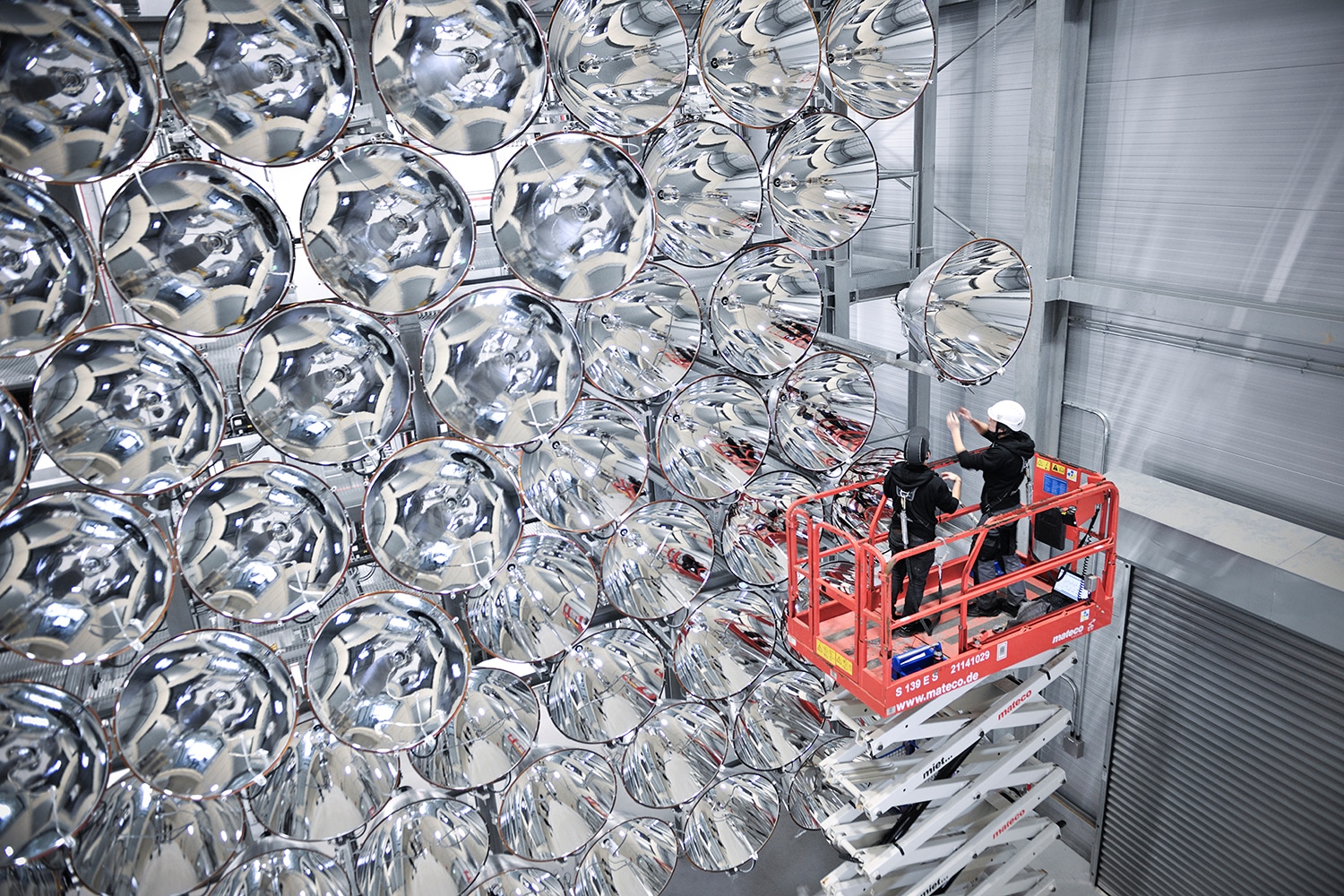
The Earth’s natural power plant — the sun — bathes the planet with more than enough green energy to fulfill all our power needs. However, while we have managed to harness some of it through solar panels, most of its potential remains untapped. Finding new ways to capture more of this unlimited sustainable energy has proven tricky given that the sun doesn’t work at night, often hides behind clouds, and in some areas of the world, disappears altogether for months at a time. Now, scientists and engineers at the German Space Center (DLR) in Jülich have built a more reliable and controllable substitute to enable researchers to discover new ways to capture the sun’s energy.
Called Synlight, the world’s largest artificial sun, which cost €3.5 million ($3.77 million USD), is a 45-feet high and 52-feet wide honeycomb-like structure made of 149 7-kW xenon lamps. When focused on a single area, the lamps can produce temperatures of up to 5,400°F and generate 320kw, or 10,000 times, the solar radiation experienced on Earth. The intense heat is enough to vaporize humans standing in its vicinity, which is why the three-story manmade “sun,” that works like a backward parabolic reflector, is housed inside a protective radiation chamber.

Synlight, which was unveiled on March 23, will be used to help researchers find new ways to use the sun’s abundant energy to split water it into its two components — hydrogen and oxygen. Hydrogen is considered the fuel of the future because when it burns, it releases water — rather than carbon emissions — and doesn’t contribute to global warming. Scientists hope the gas can someday be used to power everything from airplanes to cars. Unfortunately, current methods of isolating the gas involve burning harmful fossil fuels or electrolysis, which needs significant amounts of electricity. Both techniques are expensive and unsustainable.
“We’d need billions of tons of hydrogen if we wanted to drive on C02-free fuel,” Bernard Hoffschmidt, a research director at the DLR, said. “Climate change is speeding up, so we need to speed up innovation.

Operating the artificial sun is not cheap as it consumes the amount of electricity used by an average four-person household annually in just four hours. However, Hoffschmidt is hopeful that Synlight’s reliability will enable researchers to master hydrogen-making techniques which can be mimicked and scaled up using our sun. Experts believe that with support from scientists worldwide, we could live in a hydrogen-fueled world within the next decade. In the future, the German researchers also hope to use Synlight to test the durability of spacecraft material and equipment when subjected to intense solar radiation. This research will help astronomers tremendously in their quest to explore worlds far beyond ours!
Resources: phys.org,newatlas.com, futurism.com